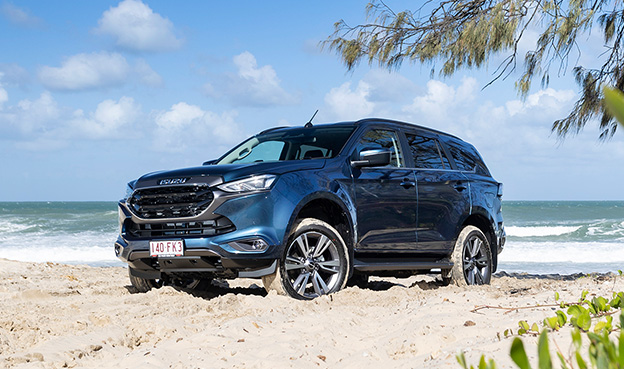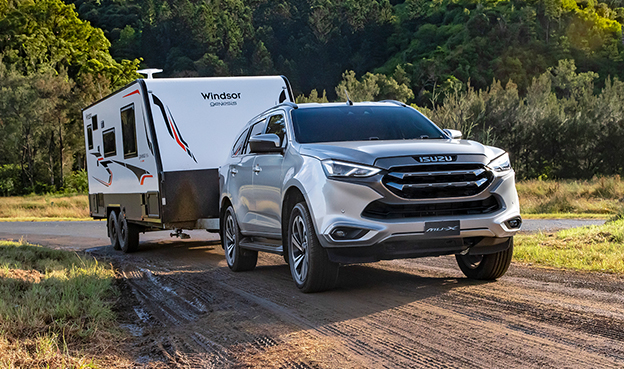

Kurrawa SLSC stalwart Harvie Allison has been saving lives for 46 years. Here’s his story.
Name: Harvie Allison
Surf Club: Kurrawa SLSC, Queensland
Harvie’s Key Lesson: “Just swim between the flags. If the flags aren’t there, you really shouldn’t be going in unless you’re very confident—simple as that.”
SLSA Lives Saved: 1367 annually (over 660,000 since 1907)
More: https://www.isuzuute.com.au/surf-life-saving-australia
Hang on, are you a Scotsman?
Aye! I arrived in Australia in 1970 from Glasgow; before the surf club I was actually an ice hockey player. I did my bronze medallion in April 1975. A friend of mine said, “Come on down! There’s free beer, you get a free t-shirt, what’s not to love?” I actually wasn’t a particularly good swimmer, but they must have figured I was going to be useful because they paid for my swimming lessons. Twelve months later I was the chief instructor, putting everybody through the bronze medallion.
What’s changed over 46 years?
The biggest difference has been the introduction of the IRB [Inflatable Rescue Boat]. I was one of the first drivers—my driver’s number is 337 and that was in 1979. The gear wasn’t as reliable as it is now, so we actually had to be a bit more gentle when we were driving. These days, we can push the gear a bit further.

Why do you love lifesaving?
It’s a family for me. I had cancer when I was 23, and when I joined the club I was still on chemo. In fact, when I first came down to the beach, a couple of the famous Ironmen—Greg Allum, Robert Chapman—ran and hid in the board and ski sheds because they thought I was a skinhead come to have a fight! But I also had a beautiful young wife and she had an aneurysm and died right out of the blue. I was a mess. The club captain at the time realised how badly I was managing and sent some of the boys to stay with me until I got myself sorted out. It took me three days to work out how stupidly I was behaving. And the club became my family. Still is.
What’s it like to save a life?
Pretty incredible. The first few rescues I did, particularly in the IRB, were amazing. I remember one big rescue, it was five people and you can only get a couple at a time. A wave the size of a house was coming down on us and another guy was trying to climb in. I had to make a split-second decision. I said, mate, I can’t take you. I pushed him off, got the two patients I had through the wave, then came around and picked him up.
How many have you saved?
I wouldn’t have a clue, ha! It just goes in a log somewhere and that’s it. And I also did 15 years on the beach as a patrol captain at the Wanda club in Sydney and I dealt with a lot of resuscitations then, too. But, you know, I was allowed to come here to this incredible country and I wanted to give back.
There’s a surf club in Gaza. Any other weird ones?
There’s more—even in the Mediterranean. There’s no surf, but there’s still lifesaving. Then there’s the world life-saving body, of which Australia is a senior member. It’s headquartered in Brussels. Oh, and I’ve actually started one! My wife’s from the Cook Islands and in 2004 I went over there to establish a big outrigger race. I’d look after the safety. But I lost a guy who had a heart attack during the race because I was dealing with a broken leg on another boat. They got him into the ambulance, but there wasn’t even a defib. I thought: I can’t have this. Now there’s defibs everywhere and they have associations with Aussie clubs. We’ve sent over rescue boards and instructors. And we’ve put in place a bronze medallion specific to the islands.

Defibs seem quite useful then.
Oh, my word, yes. In 1997 we actually went down to Noosa with a defibrillator to take photos for the brand new manual on how to use them. Then, as we walked on the beach, they pulled a guy stone cold out of the water in front of us. Three hits with a defib and we got him going. It was big news at the time—we were the first lifesavers in the world to resuscitate a person using a defibrillator.
He’s the luckiest man alive.
It turned out he was an old lifesaver from Victoria, about 72. We were pretty happy about it all!
And now you have a bunch of D-MAXs. How do they go?
Oh, they’re fantastic, just a great vehicle on the beach. And then alongside our ATVs and the jet skis, we’re really well equipped—they’re perfect for the day-to-day.
Finally, say it’s your last meal. What it going to be: a bowl of Nutri-Grain or a Chiko Roll?
Oh! Ah, a bowl of Nutri-Grain. With a Chiko Roll in it.





